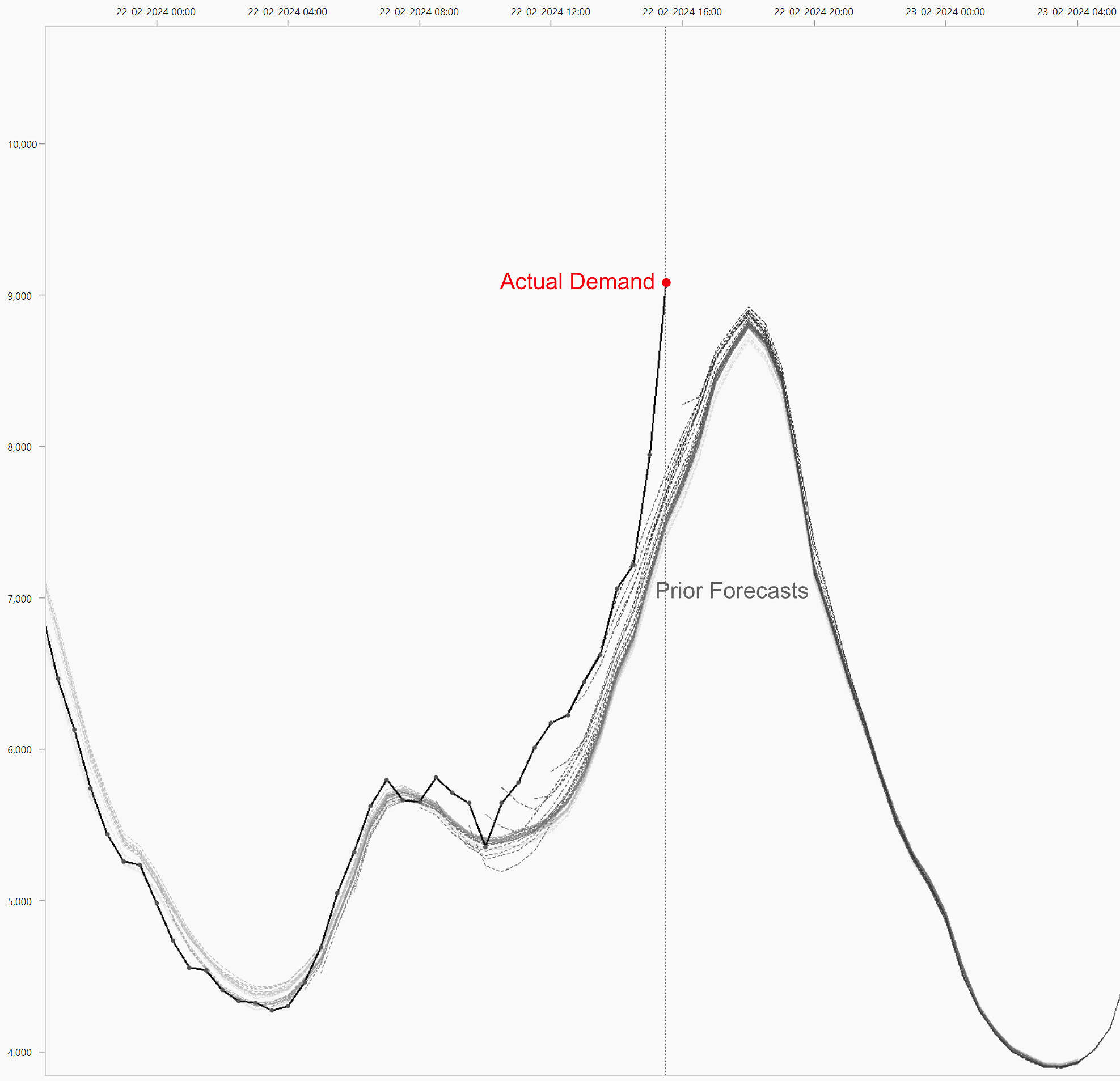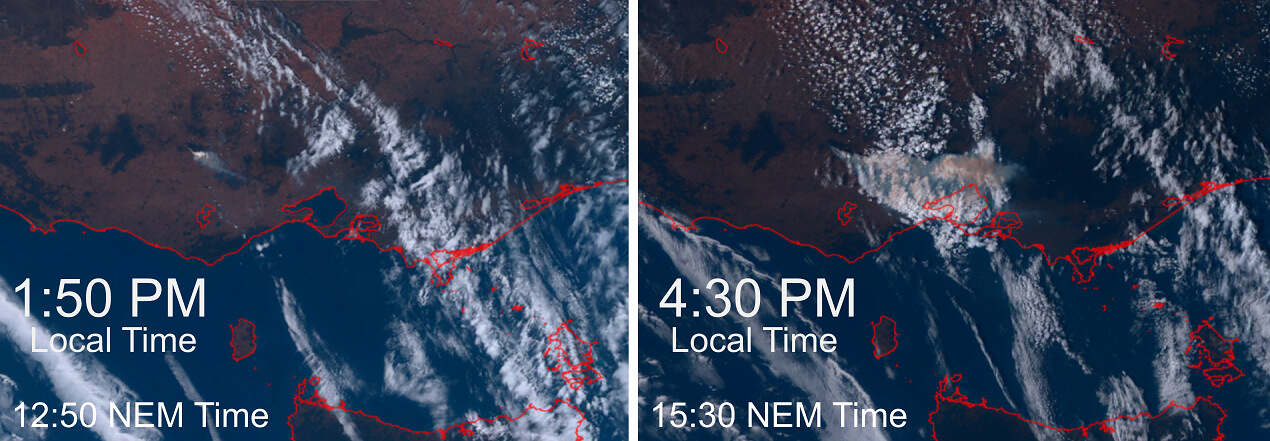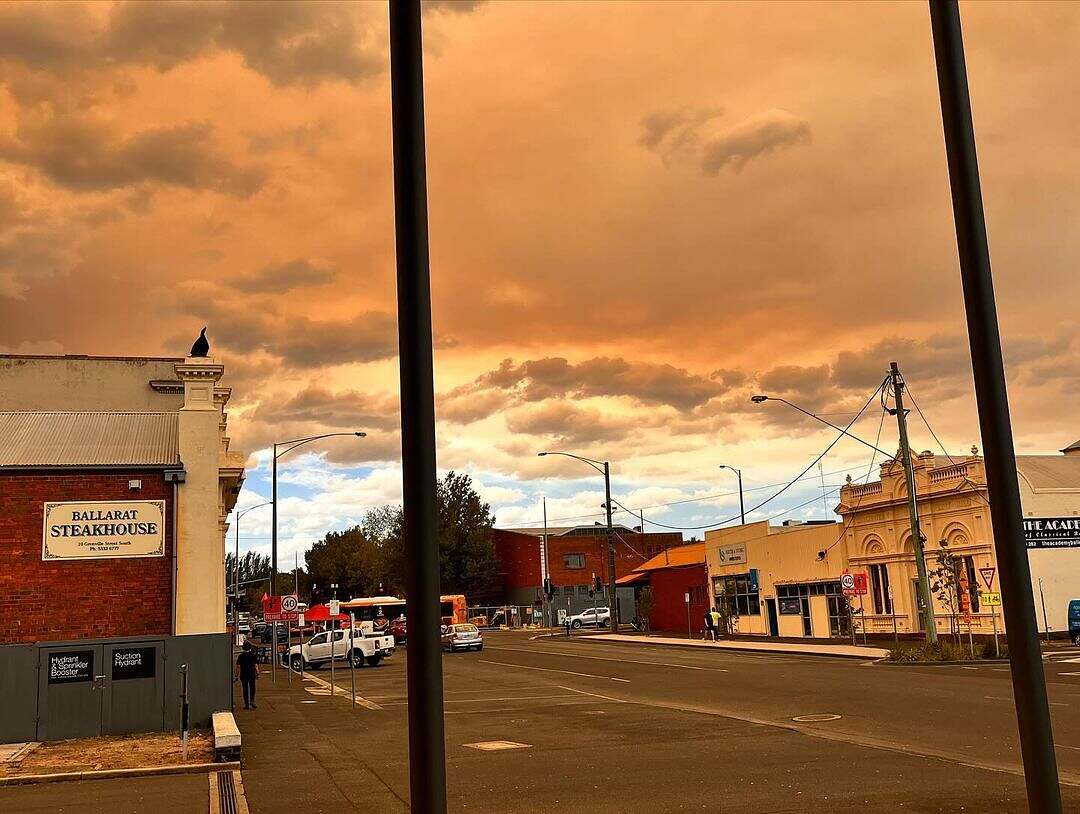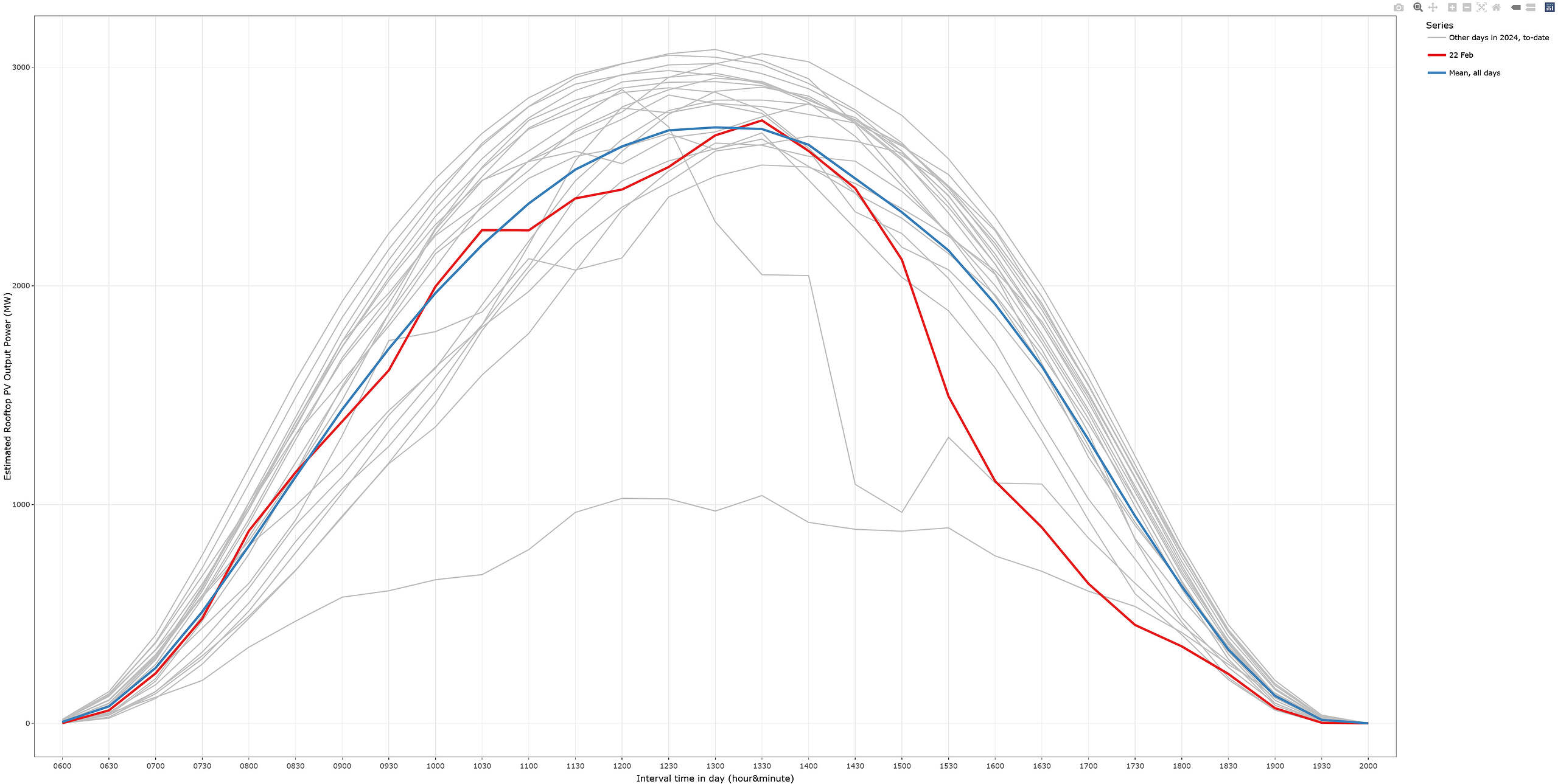The bushfire situation in Victoria and Tasmania continues to concern us (and many others) as emergency services rush to aid those affected. Yesterday afternoon we spotted a tweet from WeatherZone engineer Andrew Miskelly, which contained an animated gif that depicted the expanding nature of bushfire smoke hovering over Victoria.
Satellite images show the extent of billowing bushfire smoke originating just east of Ararat, Victoria.
Source: WeatherZone
Separately at around the same time, Linton was puzzled whilst examining our Forecast Convergence widget within ez2view.
Linton looked at ‘Demand and Non-Scheduled Generation’, whereas I’ve looked at Market Demand (a.k.a ‘total demand’ in MMS terms) below. Either way, the ‘actuals’ were landing firmly above prior P30 forecasts in the afternoon. The 15:30 P30 period NEM time was most extreme deviation, as shown in this image:

Market demand actuals were landing far above prior P30 forecasts yesterday afternoon.
Source: ez2view’s Forecast Convergence
This is earlier than when rooftop solar PV production typically fades as the sun sets.
It’s also worth reminding our readers that market demand is net of rooftop PV self-consumption (e.g. lower rooftop PV production would result in higher market demand, all else being equal).
Others in our team were puzzled as to the underlying cause of this higher-than-expected demand – and whether the bushfire smoke may have been negatively impacting rooftop PV generation throughout the state. This phenomenon has previously been studied by the AEMO, as we’ve noted on WattClarity – they had previously commissioned a 2020 report by Amperon that examined this effect, which particularly focused on large-scale solar production.
The still images shown below show that the smoke originating from the bushfire near Ararat began intensifying at around 12:50 NEM time, and had hovered over major population centers in Ballarat, Geelong, and Melbourne by around 15:30 NEM time – which coincides with the point in time highlighted in the previous graph.

The fire looks to have started (or increased in intensity) sometime after midday yesterday. By 4:30pm local time, the smoke had reached Melbourne and other areas further south-east.
Source: Himawari Real-Time
Ben Domensino posted an update about the extreme weather and bushfire risk down south earlier today, which includes images like the one below from Ballarat, that show the smoke dominating the skies.

Images: Smoke seen over Ballarat, Vic on Thursday, February 23, 2024. Source: @jacquijallen / Instagram
Those images strongly suggest to us that rooftop PV production would have been impacted in some way by the lack of solar irradiance caused by the smoke particles. Using the AEMO’s Rooftop PV estimate data, our team has plotted the chart below. It shows the mean daily profile of rooftop PV production in Victoria, and how yesterday’s profile diverged significantly from around 14:00 NEM time.

The daily profile of rooftop PV generation for Victoria yesterday (shown in red), demonstrates that production dipped noticeable below the mean (shown in blue) throughout the afternoon, starting from 14:00 NEM time.
Source: AEMO MMS
Sadly, bushfires were also burning throughout Tasmania yesterday afternoon, but I must note that there was not a similar trend in data as the number of rooftop PV systems installed in that state is far lower (mainly owing to its more southerly latitude).
Our thoughts are with those affected by this natural disaster, and we hope for safety for everyone in these areas. The latest information and emergency warnings on fires impacting these regions can be found on the related Victorian and Tasmanian government websites.


Leave a comment